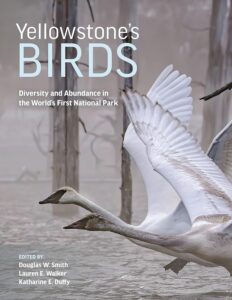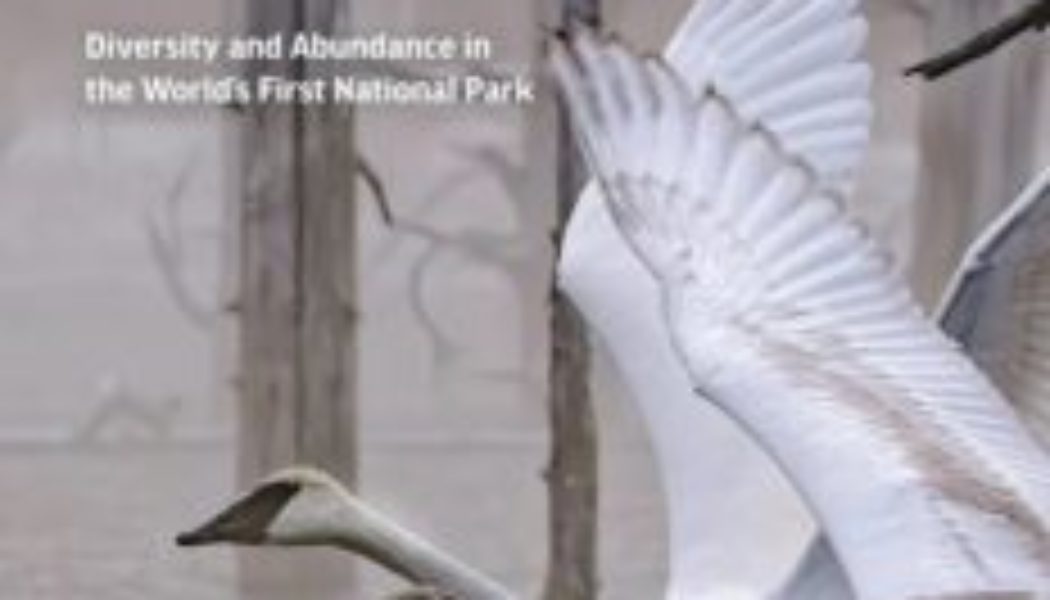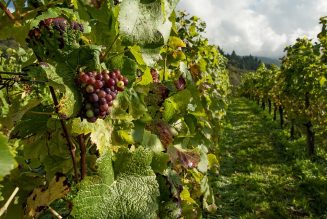Nothing compares to a peregrine falcon. Of course, comparing anything in nature is foolhardy. Nonetheless, when beholding this bird, perched or flying, one can only think of superlatives. Strikingly beautiful, masked face, the fastest animal, and a gaze of majesty knowing the ages. Bold and powerful. Untouchable. If you have seen it, you know what we mean—the falcon epitomizes the raw power and beauty of nature all at once. Their worldwide distribution makes them observable to many and has them clinging to rocky cliff s, usually above waterways, but also city skyscrapers, which they use as cliffs. Once nearly brought to extinction, these birds have made a remarkable comeback. Nature’s stunning bird has been restored, and Yellowstone National Park (YNP) is no exception.
Evolution honed peregrine falcons to be unparalleled speed machines. They have long, pointed wings, enabling them to swoop and dive in flight at mind-boggling speeds as they pursue avian prey, from small birds to shorebirds to ducks, that they capture in midair. Their bodies are tightly cloaked in sleek feathers that contribute to their streamlined aerodynamic efficiency—no fluffy owl feathers on a peregrine. Their nasal openings have a post that baffles air so that peregrines can continue to breathe as they dive. Being struck by a diving peregrine often kills prey instantly, but if it does not, the peregrine inserts the upper part of its bill, with projections called tomial teeth, between the prey’s neck vertebrae. With a quick twist, the peregrine instantly severs the spinal cord of its prey. As it flies with prey held by tightly clenched feet, each toe ending in a sharp piercing talon, the peregrine might even eat on the wing.
Peregrines are the most far-reaching terrestrial vertebrate, occupying every continent except Antarctica. This wide global reach makes them hard to characterize, as they live across a broad range of ecosystems, from desert to tundra and coasts to mountains. The species has such a broad reach that one peregrine researcher said that his boss referred to a peregrine as “a weed among hawks,” as this bird adapts to almost everything—like a weed. They can also be tolerant of humans. Equally broad is their diet; although they eat birds almost exclusively, they rarely specialize in a particular species. This breadth of range and diet makes them resilient, a characteristic needed for life in Yellowstone because of its high elevation, unpredictable weather, and large swaths of relatively unproductive (for birds of prey) coniferous forests.
Although tough, peregrines were not spared from worldwide population declines due to organochlorine pesticide use, mainly dichloro-diphenyl-trichloroethane, commonly known as DDT. Widely used in agriculture in the 1940s and 1950s, this pesticide was used in forest management as well. Some 62 tons of DDT were applied in northern Yellowstone in 1953, 1955, and 1957 to control a spruce budworm outbreak. This pesticide-induced decline was first identified in Great Britain but was soon found to have global reach. Although few direct mortalities were attributed to DDT, its sub-lethal effects caused eggshell thinning, resulting in widespread reproductive failure. Across North America, peregrine populations declined during the 1950s to 1970s, depending on the level of exposure to DDT. Populations in eastern North America and southern Canada were completely extirpated, and falcons in western and northern populations declined between 10% and 75%. The portion of the population in Yellowstone National Park was lost. Some thought there would be no peregrines south of the 50th parallel, and there was nothing to be done.
Peregrines are the most far-reaching terrestrial vertebrate, occupying every continent except Antarctica.
Piecing together peregrine history in YNP is difficult due to inconsistent records and monitoring. Likely abundant in what is now YNP for centuries, the first peregrine falcon in park archives was recorded in 1914 by naturalist Milton Skinner. Spotty records exist through the next several decades, with sightings in the Bechler area (1929; an adult with two young), the Firehole River corridor, Osprey Falls, and especially the Grand Canyon of the Yellowstone. With towering cliffs astride the Yellowstone River, the Grand Canyon was and is ideal habitat for peregrines. Others, most notably Jay Sumner and Jim Enderson, did some additional monitoring during the 1960s, knowing there was evidence of nesting in the 1950s, but the effects of DDT were already taking hold. Enderson visited the Grand Canyon of the Yellowstone in 1961, 1962, and 1964 and found no peregrines. At another site that had been active in 1960, he saw an adult in 1964 and heard a second but did not find a nest.
By the 1970s, sightings in YNP were rare and confirmation of breeding tenuous. Peregrine falcon expert Bob Oakleaf (Wyoming Game and Fish Department; WGFD) conducted surveys during this period and presumed peregrines were present, although he was unable to locate any. The last known nesting territory was vacant by 1970. The combination of inconsistent monitoring and DDT-induced declines made putting together the peregrine story problematic; they were nearly extirpated before people really started looking. Because there were no estimates of population size or adequate records of known nest sites, it was impossible to know much about them or how their populations were changing within the park. Elsewhere in North America, populations reached their lowest levels by the mid-1970s. Peregrines were listed as endangered in 1970 under the Endangered Species Conservation Act of 1969, a precursor of the Endangered Species Act (ESA) of 1973, and then listed under the ESA.
Once DDT was banned and ESA protections were put in place, recovery efforts began in earnest. A massive, North America–wide reintroduction effort was undertaken. Most prominently, the Peregrine Fund was born, with a goal to captively rear peregrines for release across their decimated range. Along with others, the Peregrine Fund released nearly 7,000 peregrines across North America between 1974 and 1998. YNP was part of this significant endeavor and was considered the center of recovery efforts for the Wyoming, Montana, and Idaho region, with 36 captively raised young released in the park at four sites between 1983 and 1988. These acclimation and release areas, called hack sites, were located at Madison Junction, Slough Creek, Crown Butte, and Terrace Mountain. Regionally, 644 birds were released at 35 sites within 162 miles (260 km) of YNP from 1980 through 1997. Interestingly, the last territory known to be occupied in YNP, located in the Grand Canyon of the Yellowstone, was the first to be reoccupied in 1984 by two of these released birds. The female came from a Jackson, Wyoming, release area and the male from a nearby location in Idaho.
After the Grand Canyon of the Yellowstone territory was occupied, reoccupation of the park was spotty and slow. By 1994, only 11 pairs (about one new pair per year) had reoccupied YNP. Additionally, reproductive success was initially low, and through 1989, only about three young per year were produced park-wide. After 1989, however, reproduction accelerated, and in 1992, 17 young were produced. Furthermore, there was evidence, based on banding records, that most of the recruitment was from birds born to wild and not released parents. As time went on, reoccupation continued to increase, and by 2007, there were 32 known pairs across the park.
Peregrine falcons are back and doing well in Yellowstone. With continued monitoring of both birds and eggs, we hope to be able to detect any decline or new environmental contaminant before it leads to extirpation again. Protecting all the native wildlife in Yellowstone is at the heart of our most fundamental charge. Our other charge is you: we aim to keep this amazing bird visible and enjoyable for all of Yellowstone’s visitors, so its sight and sound can be heard echoing off Yellowstone’s canyons and cliffs.
__________________________________

Yellowstone’s Birds: Diversity and Abundance in the World’s First National Park, edited by Douglas W Smith, Lauren E Walker and Katharine E Duffy, with Robert K Landis, is available from Princeton University Press.




![TikTok is making sea shanties big again [note: skip the first video and jump down to the various ‘Wellerman’ mixes]…](https://salvationprosperity.net/wp-content/uploads/2021/01/tiktok-is-making-sea-shanties-big-again-note-skip-the-first-video-and-jump-down-to-the-various-wellerman-mixes-327x219.jpg)




